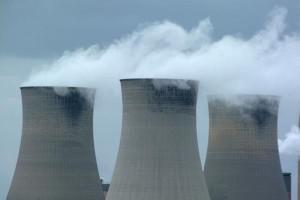 The Japanese government announced on January 24 that it would be reviewing its international pledge to reduce Japan’s greenhouse gas emissions by 25 percent by 2020 from 1990 levels, with plans to establish a new target. At a press conference, Chief Cabinet Secretary Yoshihide Suga, the top spokesman for new Prime Minister Shinzo Abe, said that the original goal would be unattainable as a result of the Fukushima nuclear disaster in March 2011, which forced Japan to rapidly scale up oil and gas thermal power generation to meet energy needs. While not unexpected, Japan’s move raises important domestic and international considerations for emissions reduction policies.
The Japanese government announced on January 24 that it would be reviewing its international pledge to reduce Japan’s greenhouse gas emissions by 25 percent by 2020 from 1990 levels, with plans to establish a new target. At a press conference, Chief Cabinet Secretary Yoshihide Suga, the top spokesman for new Prime Minister Shinzo Abe, said that the original goal would be unattainable as a result of the Fukushima nuclear disaster in March 2011, which forced Japan to rapidly scale up oil and gas thermal power generation to meet energy needs. While not unexpected, Japan’s move raises important domestic and international considerations for emissions reduction policies.
Japan’s 25 percent greenhouse gas emissions reduction target was first announced by then-newly elected Prime Minister Yukio Hatoyama in September 2009, in advance of the UN Climate Change Conference in Copenhagen. The pledge, which was then the most ambitious of those made by major economies, was contingent on other major emitters making similar commitments to reduce their own carbon footprint. It far surpassed the 8 percent target proposed by the previous government of Prime Minister Taro Aso earlier that year. While this goal was supported by the Japanese public, it immediately triggered opposition within sectors of Japan’s business community as an unrealistic target that could damage Japan’s economy and kill jobs. Despite the shortcomings of the Copenhagen Summit, the Japanese government stuck with the target and began to move forward with new policy proposals aimed at supporting it, including the introduction of a feed-in tariff to promote renewable energy generation.
However, achieving this goal was predicated on the continued growth of nuclear power as an energy resource. Prior to the Fukushima disaster nuclear power accounted for more than 30 percent of Japan’s energy generation. With the shutdown of nearly all nuclear power plants in Japan in the almost two years since then, and public trust of the nuclear industry and government regulators virtually non-existent, it is hard to see nuclear energy generation returning to these levels in the near term. Any new target determined by the Abe government will need to reflect that reality—though will also likely be predicated on an eventual return to increased nuclear power generation.
How Japan manages this challenge, and the new greenhouse gas emissions targets it sets, will have important implications for global climate change initiatives. Beyond Japan’s massive economic footprint, the country has long been a pioneer in improving energy efficiencies and in transferring clean and pollution-reducing technologies to developing economies. Moreover, while the Fukushima crisis accelerated efforts to phase out nuclear energy in Germany and other European countries, other major economies including China and South Korea continue to increase their nuclear power generation capacity, both to meet energy needs and also as an integral component of domestic green growth policies. The course Japan takes on these fronts will be watched closely, and stands to shape the future ambition and direction of global greenhouse gas emissions reductions efforts.
Image Source: FreeFoto.com

